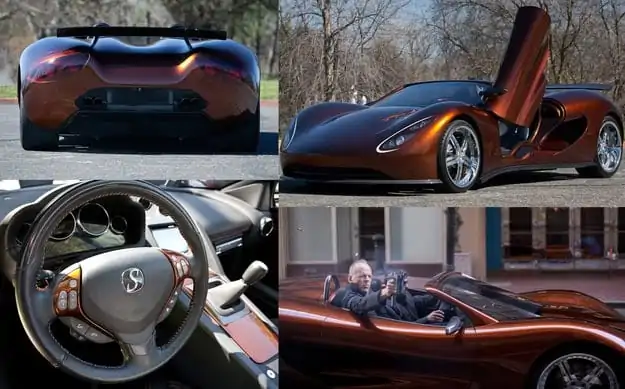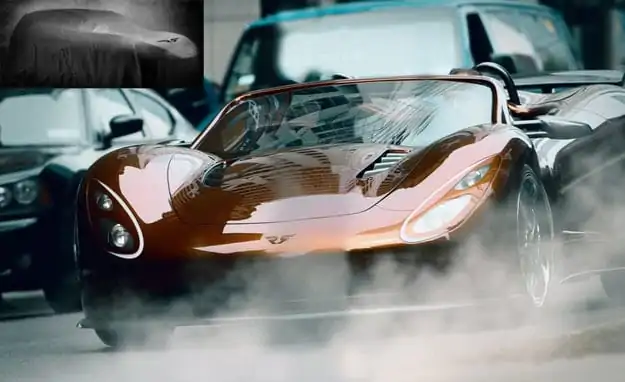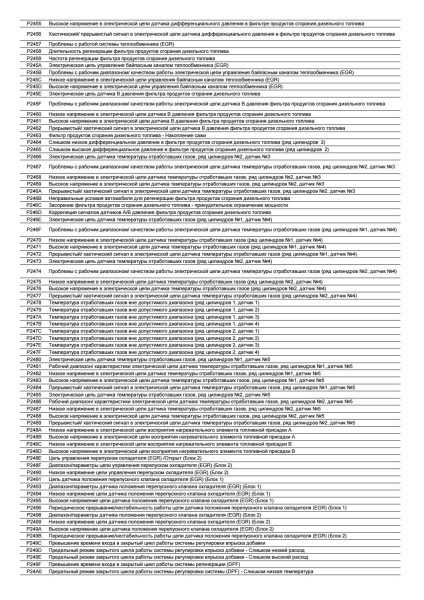
Ronn Scorpion Roadster passes the baton to the crossover
The Ronn Motor Group of Scottsdale, Arizona has announced the launch of a hydrogen fuel cell crossover called Myst in 2022. The name may contain a hint of mystery or enigma, but this is a distorted word for fog ("fog"), a reference to a muffler in the form of water vapor. The car will be built on a new modular Q-Series platform. It will form the backbone of a range of SUVs and vans. Plans also include sports cars, sedans and even a bus and truck (the latter two will have their own chassis). This announcement would not be so interesting if it weren't for the support of Ronn Motor from China, which gives us some reason to be optimistic about the project.
Ronn Motor was mentioned in the news earlier, plus it has already been written about one of her projects (about it below). Meanwhile, his story began in 2007. The picture shows its founder and CEO, engineer Ron Maxwell Ford.
Ronn Motor promises to introduce cargo class 2021-3 at the end of 6 (gross weight from 4,54 to 11,8 tons). An autonomous range of 100-200 miles (161-322 km) is claimed on one charge and 500 miles (805 km) for hydrogen. A hydrogen bus for 15–28 passengers is a much more distant idea. It is expected to be sold in the US and China.
The American company has four joint ventures with Chinese partners that give Ronne access to the facilities of several Chinese automobile companies and their research and development departments. Partners: Durabl (Jiangsu) Motors of Pizhou City, Jiangsu Province, with an assembly plant in Henan Province, Jiangsu Hanwei Automobile (Taizhou City), Jiangsu Kawei Automotive Industry Group (Danyang City). A fourth joint venture was created with the Taizing City Council, which allocated $ 2,2 million for the development of the project. The Americans also mentioned an agreement with the city of Qingdao. He ordered vans to supply hydrogen with a potential $ 200 million deal.

Roadster Ronn Scorpio appeared in the 2012 sci-fi film Looper, starring Bruce Willis.
The history of the company is no less interesting than projects for the future. It all started with the 2008 Scorpion prototype, powered by Acura's 3,5-bit-turbo six-cylinder engine that develops 450 hp. and propels the car to 60 mph at 97 km / h in 3,5 seconds. The sports car is powered by gasoline and hydrogen (proportions vary depending on the driving mode). The hydrogen is produced on board in an electrolytic cell (the Scorpion has a 1,5 liter water tank).
The scheme seems meaningless, but the Americans said that the electrolyzer, when braking, takes energy from the car's electrical network, and the hydrogen itself, added to the combustion chamber, helps to burn gasoline better. Hence, savings should be obtained. The prototype body (steel frame, CFRP outer panels) was created by the California-based company Metalcrafters. Scorpion 2008 has been deployed on many different continents and was the starting point for the next project.
The Phoenix Roadster looks like a Scorpion, but no tailpipes. Phoenix Spyder is also developed. Among the systems promised autopilot up to 4-5 levels, "cloud" services, a solar battery for auxiliary systems. In the future: charging from an inductive device and even from vibration.
The designers abandoned the internal combustion engine, leaving the base and design of the Scorpion. The Phoenix roadster project was born. According to the company's plan, it will be driven by four electric motors (one for each wheel) with a total capacity of 600-700 hp. Acceleration from 100 to 2,5 km / h takes 290 seconds. The top speed will be electronically limited to 60 km / h. The battery will have a capacity of 90 kWh (base) or 560 kWh (optional). Autonomous battery mileage up to XNUMX km.

The future SUV will be made in the style of the company's previous projects, that is, the Scorpion / Phoenix.
And in addition to the battery as an option, Phoenix will be able to supply cylinders for six kilograms of hydrogen and fuel cells that recharge the battery while driving. With hydrogen, autonomous mileage will be increased by 320-480 km (up to 1040 km in total at the latest estimate). Other models of the brand should be created according to a similar scheme: an electric drive, a battery, hydrogen and fuel cells as a “range expander”. Just like the Renault Kangoo and Master ZE Hydrogen, where the mains-powered battery is the main power source and the hydrogen system is the secondary one.
